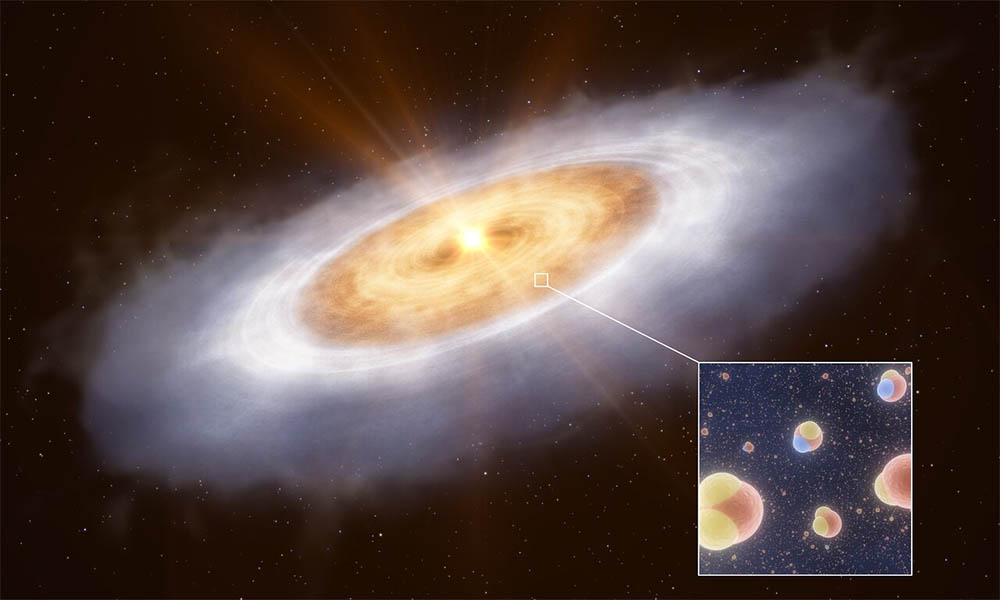Astronomers find missing link for water in the Solar System
Using the Atacama Large Millimeter/submillimeter Array (ALMA), astronomers have detected gaseous water in the planet-forming disc around the star V883 Orionis. This water carries a chemical signature that explains the journey of water from star-forming gas clouds to planets, and supports the idea that water on Earth is even older than our Sun.

“We can now trace the origins of water in our Solar System to before the formation of the Sun,” says John J. Tobin, an astronomer at the National Radio Astronomy Observatory, USA and lead author of the study published today in Nature.
This discovery was made by studying the composition of water in V883 Orionis, a planet-forming disc about 1300 light-years away from Earth. When a cloud of gas and dust collapses it forms a star at its centre. Around the star, material from the cloud also forms a disc. Over the course of a few million years, the matter in the disc clumps together to form comets, asteroids, and eventually planets. Tobin and his team used ALMA, in which the European Southern Observatory (ESO) is a partner, to measure chemical signatures of the water and its path from the star-forming cloud to planets. […]
Read more in the original article: ESO
🇵🇹 Versão portuguesa disponível aqui


Leave a Reply